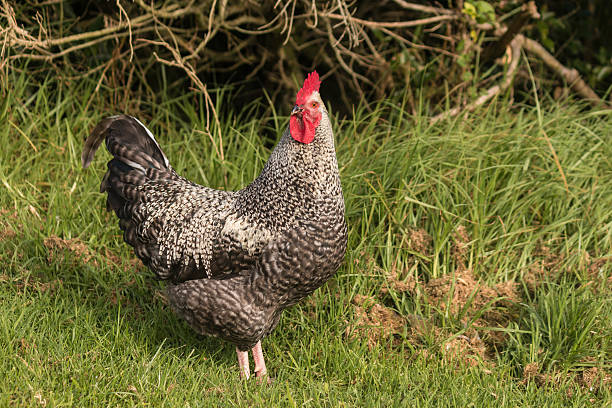introduction
Lavender Wyandotte chickens are a pretty addition to any small holding or backyard chicken project. These birds have striking soft lavender-grey plumage, friendly character and prodigious egglaying abilities making the Lavender Wyandotte one of the most sought after breeds. So, if you are one of the people who are searching for stunning and fruitful bird, this pet is for you! In this article, I’ll share with you the history of how Lavender Wyandotte developed its looks, describe the founders of this breed and what makes it special, as well as discuss the pèles of care that make this bird loved by experienced and beginner chicken owners alike.
Origins and History
The Lavender Wyandotte is therefore a young colour pars with the Wyandotte breed having been established for some time in the poultry farming industry. Originally created in the United States in the latter half of the nineteenth century, Wyandottes are an excellent layer and also meat bird. Lavender variety is therefore referred to as a ‘self-blue’; the birds have soft, silvery-grey plumage that are not mixed with other shades unlike other Wyandottes.
This creation of the Lavender Wyandotte is due to breeding intentionally for the purpose of instating the lavender gene; this gives a unique coloration while not hindering breed’s hardiness. Although this is a relatively new variety, many poultry farmers have come to appreciate this bird because of its beauty, as well as its generally stable temperament.
Lavender Wyandottes and Related Varieties
Bird breeding can be very colorful and the pattern of the chicken breeds interesting and beautiful, one of the most preferred chicken breeds is the Lavender Wyandotte. This present article also aims to discuss about the specialization of the Lavender Wyandotte rooster, differentiating the Lavender Wyandotte from the Lavender Orpington, discussing more about the rather enigmatic Violet Laced Wyandotte Lavender, and focusing on the Blue Wyandotte chicken.
Lavender Wyandotte Rooster
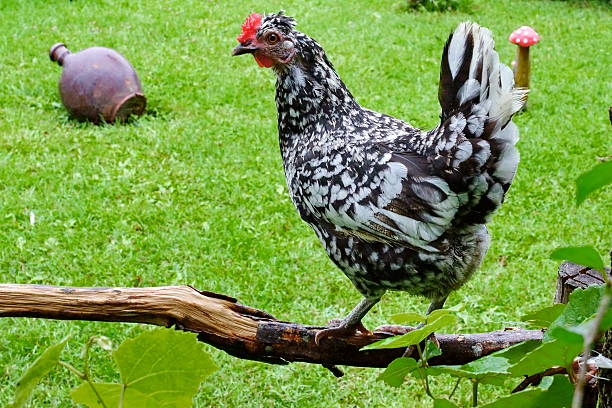
Lavender Wyandotte roosters are usually developed for their magnificent looks and agreeable character. Here are some key characteristics:Here are some key characteristics:
Appearance: Lavender Wyandotte rooster has an attractive soft and sleek deep lavender-gray color that is the same as that of hens. The feathers are grey and uniformly coloured with a silver metallic sheen in slim sunlight. They are well-formed birds because they are muscular and have a round body with a well-developed broad chest – typical Wyandotte shape.
Combs and Features: The rose combed roosters like the ones depicted in the picture below have bright red wattles and earlobes that show the sharp contrast from the rest of the feathers. These hues blend and give the twins a nice appearance when they complement each other.
Temperament: They are good for breeding with other breeds as they are known to be gentle and docile even the cocks are not aggressive Lavender Wyandotte. They are not very forceful as other rooster breeds; they help maintain the order within the flock.
Lavender Wyandotte vs. Lavender Orpington
Both Lavender Wyandottes and Lavender Orpingtons are admired for their distinctive lavender plumage, but they have different attributes and origins:
Origin and Development: The Lavender Orpington is a British breed known for its friendly nature and fluffiness, while the Lavender Wyandotte was developed in the United States with a focus on dual-purpose utility.
Size and Build: Lavender Orpingtons are bigger and more fluffy coated than Wyandottes. Orpingtons can also be sold based on their softness and large body structure which makes them have a special looking curve.
Egg Production:It is indomitable in the laying of eggs with almost the same productivity to Orpingtons though they are better producers in cold areas due to their thick plumage.
Temperament:Temperament in both breeds is friendly, though Orpientons may be more docile than their counterparts. Wyandottes have a very curious nature and they don’t tire easily and hence are very lively companions in a group.
Violet Laced Lavender Wyandotte
The Violet Laced Lavender Wyandotte is an emerging and experimental variety that combines the soothing lavender color with intricate lace patterns:
Unique Patterning: This variety exhibits violet lacing on the lavender feathers, creating a striking and visually captivating effect. The contrast between the delicate lacing and the base color adds depth to their appearance.
Breeding: Breeding for this pattern is complex and requires patience, as achieving consistent lacing patterns can be challenging. Breeders focus on combining genes that enhance both the lavender color and the desired lacing.
Desirability: It is not listed as one of the recognized breeds, however, it draws the attention of poultry lovers for the purpose of breeding and ornamental value.
Blue Wyandotte Chicken
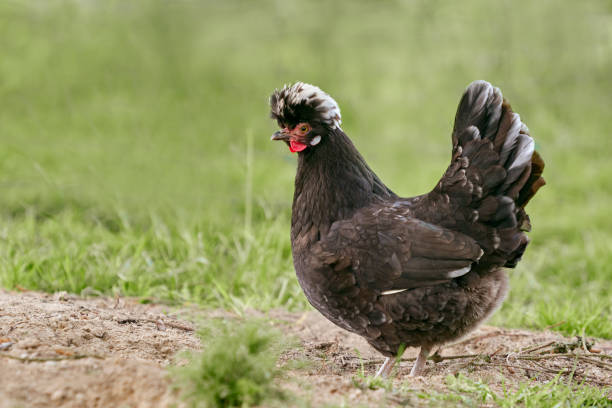
Apart from the Lavender Wyandotte, the Blue Wyandotte is another popular variety known for its stunning coloration:
Coloration: As for Blue Wyandottes it has greyish-blue feathering, though the shades may range between slate or somewhat bluer than that. This brings certain amount of individual character into each of the birds, adding considerably to the charm of the variety.
Breeding Challenges: It is the Andalusian gene that can create three different colours in the offspring, blue, black and splash. Mating can at times be random and therefore sire and dam can produce a multitude of colours.
Characteristics:Like other Wyandottes the Blue Wyandotte is built for hardiness and is a dual purpose bird which lays well and is gentle. They also have similar beloved personality that is attributed to the breed.
Physical Characteristics
Lavender Wyandottes are standard size birds and the hens weigh between 5 and 6 ½ pounds. 5 to 6. Five pounds for hens, and about seven for roosters. 5 to 8. 5 pounds. Its outer feathers are wide and round at the cross-section and there are no feathers from the mid-line to the center of the bird. These are fluffy and the color ranges from lavender-grey with a metallic sheen which is also the source of the name.
They have beautiful rose combs, wattles, and red colored ear lobes while they are lavender all over. The legs and feet of the birds are normally yellow in color, making them stand out from the rest of the birds. The basic and striking pastel combination of its coat make it very suitable for both work and breeding and commercial purposes.
Egg Production and Temperament
One of the advantages is the high productivity of the Lavender Wyandotte which does not cease to lay eggs. It is said that these hens lay between 200- 240 brown eggs per annum and thus good layers particularly to a family. Their eggs are of a medium to large size and the birds continue to lay throughout winter.
Care Requirements
The Lavender Wyandotte is all similar of other Wyandotte that it is hardy and fairly low-maintenance birds that can be manage with common chicken practices. Here are some care tips to ensure they thrive:
Housing for Lavender Wyandottes
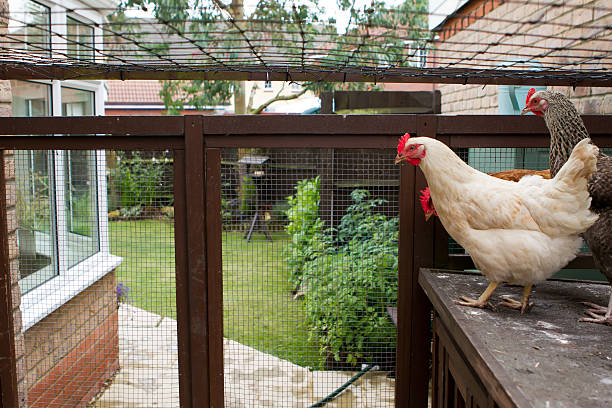
Coop Size and Dimensions: If you are to design a coop for Lavender Wyandottes here are some size measurements that are rather important for the prosperity of the birds.
- Indoor Coop Space: Plan at least four square feet of the space for each bird that will be spending time in the coop. For instance, a coop housing 6 Lavender Wyandottes should have at least 24 square feet, say 4 x 6 or thereabout. More space is preferable to
- Run Space: Each chicken should have at least 10 square feet of outdoor run space. If you have a run measuring 10′ x 10′, it can comfortably accommodate 6 birds. A larger run is ideal, especially if they will spend a lot of time outdoors.
Coop Features:
- Ventilation: Proper ventilation is crucial for maintaining a healthy environment. Ensure the coop has:
- Windows or vents that can be opened for airflow without exposing chickens to drafts.
- Roof overhangs to protect the openings from rain and snow.
- Perches: Lavender Wyandottes love to roost, so include:
- These perches should be 2 to 3 feet high, enough space for all the birds should be created on the perches.
- Rounded non-slip perches to avoid claw puncturing of feet.
- Nesting Boxes: Create good environments in which females can lay eggs without any fear being harmed or feeling uncomfortable.
- They should be large enough (about 12”x12”) to comfortably house the hens and should preferably be made of wood so that there is nothing the birds can chew on.
- Ideally the minimum number of nests for a colony should be approx one nest for each three to four birds in order to minimize competition and hen stressing during laying.
- Ensure boxes are located in a quiet, private area of the coop to encourage hens to lay their eggs.
- Flooring: Use materials that are easy to clean and provide comfort:
- Dirt or sand is preferred as it allows for dust bathing and natural behaviors.
- Wood shavings or straw can also be used, but ensure they are kept dry to prevent health issues.
- Security: Protect your Lavender Wyandottes from predators:
- Use hardware cloth or chicken wire with a small mesh size for windows and runs.
- Ensure all openings are secure and check for weak spots regularly.
Creating a well-designed coop tailored to the needs of Lavender Wyandottes will enhance their overall health and happiness, contributing to a productive and enjoyable backyard flock.
Diet:Organized on a quality layer feed with adequate vicious, fresh and green feeds with limited supply of treats. The importance of the provision of clean and safe water frequently cannot be undermined.
Grooming: Their dense feathering may require occasional grooming to prevent matting, especially in wet or muddy conditions.
distinguishing features of Lavender Orpingtons
Lavender Orpingtons are a captivating and popular breed known for their distinctive appearance and friendly demeanor. Here are some of the key distinguishing features of Lavender Orpingtons:
1. Color and Plumage
- Lavender Coloration: Lavender Orpingtons are renowned for their beautiful, soft lavender-grey plumage. The “lavender” or “self-blue” color is a result of a specific genetic mutation that produces a uniform soft grey tint throughout their feathers.
- Fluffiness:They possess several secluded feathers than most birds and as such are large round birds. These are mainly seen around the tails and parts of the underbodys and this gives the charecters a fluffy look.
2. Physical Build
- Size:Lavender Orpingtons are good examples of the large type of Orpingtons. They are strong birds and bulkier, and the hens are usually between 2. 7 to 3. 6kg and the roosters, 3. 6 to 4. 5kg.
- Shape:They have a large and prostrate body with a horizontal backbone, it is one more factor of their magnificent appearance in the flock.
- Combs and Wattles: They possess the disy medium single combs and wattles that are of a bright red color which sets well on the bird.
3. Temperament
- Gentle Nature: Friendliness and docility are probably at an all-time best with Lavender Orpingtons. They are relatively calm and are therefore suitable for families and people who wishes to rear chickens for the first time.
- Sociability: These birds are social and will want to socialize with the human caretaker of the birds. They are quite sociable with other birds, therefore is very suitable to be put together with other poultry breeds.
4. Egg Production
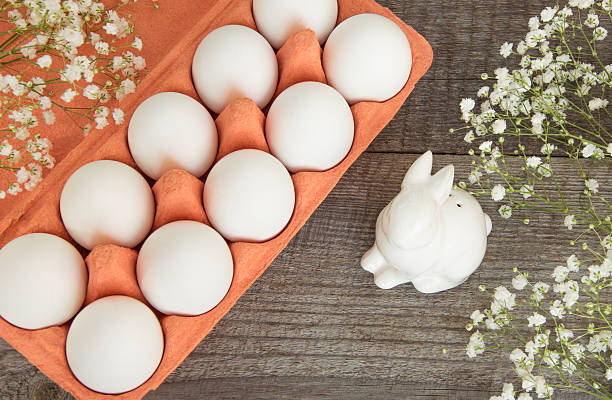
Egg Quality of Lavender Wyandottes
Besides the appearance, Lavender Wyandottes are appreciated also for the high results of productivity in the number of eggs laid. The quality and characteristics of eggs produced by these birds are fundamental information that should be acquired.
Size and Color
- Size: Lavender Wyandotte hens produce medium to large eggs but standard size between 2.5 to 3 ouncers (70 to 85 grams) on average. It may be slightly bigger, or even smaller than the description above, depending on the specific hen and her age.
- Color: The eggs are characterized by their beautiful light brown shell, which can range from a pale tan to a more medium brown hue. This consistent shell color adds visual appeal, especially when displayed alongside eggs from other breeds.
Taste and Culinary Use
- Taste: Wyandotte Lavender growers claim that their chickens lay EGGS with a rich and delicious taste. The taste is said to be determined by their feeding habits and general health, which makes them good for any meal or preparation; breakfast, bake goods, etc.
- Culinary Versatility: The eggs are medium in size and have a good taste to append in all recipes of both sweet and sour dishes.
Egg Production Variability
- Age: Egg production typically peaks at around 6 months of age when the hens begin laying. Initially, the production may be less consistent as they establish their laying patterns. As they mature, hens can produce approximately 200 to 240 eggs per year. However, production may gradually decline as they age, especially after their second or third year.
- Seasonal Changes: Lavender Wyandottes are known for their ability to lay eggs consistently, even during colder months. Their thick plumage helps them tolerate cold weather, allowing them to maintain egg production year-round. However, daylight hours can influence their laying patterns; hens may reduce egg production during the shorter days of winter. Supplementing with artificial light in the coop can help stimulate production during these months.
By understanding the characteristics and production patterns of Lavender Wyandotte eggs, you can better appreciate their contributions to your backyard flock. Their consistent laying, combined with the quality of the eggs, makes them a valuable addition for anyone seeking to enjoy fresh, home-laid eggs.
5. Hardiness
- Cold Weather Tolerance: Due to the high density of the feathers, Lavender Orpingtons can be recommended for the breeding in the areas with a cold climate. Birds and their coverage of feathers which makes them well insulated to withstand such kinds of harsh situations during winter periods.
Why Choose Lavender Wyandottes?
The Lavender Wyandotte is one of the most notable options for people who want an aesthetically pleasing chicken breed that is not short on production. They are formally beautiful birds which increase the glamour of any flock, are good layers and are friendly hence could be of importance. Owners seeking the eggs, company, or show purposes, the Lavender Wyandotte is best of two worlds owing to its moderate size and attractive appearance.
Socialization of Lavender Wyandottes
Lavender Wyandottes are friendly birds and trusted to be around children and other pets and therefore ideal for backyard breeding. Here’s a closer look at their behavior and interactions:
Behavior with Humans
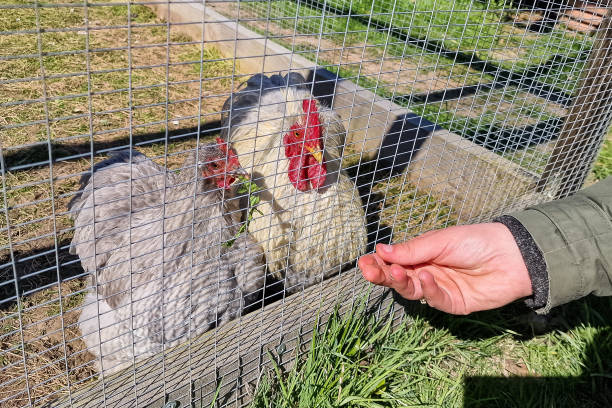
Being raised on a homestead, Lavender Wyandottes are friendly and have no fear of people. They have shown a phenomenon of curiosity and have an inherent interest in socializing with their supposed owners. In many cases, these birds will stay around the owner’s yard waiting to be fed or played with in one way or the other. They hence do not easily transform from being anxious or aggressive, qualities that would be disadvantageous to them especially in families.
Interaction with Children
These chickens typically display a patient and tolerant attitude towards children. Their docile nature allows children to safely engage with them, whether it’s feeding or simply observing their antics. For instance, many families share heartwarming anecdotes of their Lavender Wyandottes happily pecking at treats offered by little hands or curiously inspecting the kids during playtime. Children can also learn valuable lessons about responsibility and compassion through caring for these gentle birds.
Behavior with Other Animals
About other animals Lavender Wyandottes are friendly birds and can be kept with other poultry and some pets as well. They are not assertive and most of the time, they are able to create dominance hierarchy without much fame. Owners sustain that their Wyandottes are friendly with the domestic animals, dogs and cats for instance due to their friendly nature.
Personal Anecdotes
The event for me and the audience has been my Lavender Wyandottes colourful presence in the backyard. One day I was watering the plants and my kids were playing with the chickens in the yard; they were chasing each other and Suddenly the chickens flew in front of my children and even on a bench nearby they sat down happily. One of our Wyandottes whom we came to call Lavender Lucy seemed to especially take a liking towards our dog. They mostly incorporated a good den in the sun, and Lucy embraces her bird companion’s back from any potential shock or other distress.
Pricing and Availability
Before engaging in the process of getting your flock increased with Lavender Wyandottes, it’s equally important to get know the basics about their prices and their supply. Currently, chicks of Lavender Wyandotte poultry breed cost between $5 and $15 per chick depending on the hatchery and demand for the breed. Hence the prices may differ with age, sex and lineage. The adult Lavender Wyandotte chickens can be bought at a bit high price, ranging from $25 to $50 or more depending on show quality or from professional breeders.
It is more variable because it depends with the season, most probably during spring and early summer when hatchery operators receive more orders for chicks. It may be more beneficial to contact local breeders as well as hatcheries and poultry shows for supplies. Most of the reputable hatcheries also give customers an opportunity to order for chicks for future delivery so that they can be assured of the number of chicks they require.
In addition to standard hatcheries, consider joining local poultry clubs or online forums dedicated to chicken keeping. These communities can be excellent resources for finding Lavender Wyandottes and connecting with fellow enthusiasts. Always be sure to research the seller’s reputation to ensure you are purchasing healthy birds.
User Testimonials
John, Backyard Chicken Keeper
- “I started with Lavender Wyandottes a year ago, and I couldn’t be happier! Their gentle nature has made them a favorite among my kids. They love to interact with the chickens, and I feel safe knowing these birds are friendly and calm.”
Sarah, Small Farm Owner
- “I’ve had various chicken breeds over the years, but my Lavender Wyandottes stand out. They not only lay beautifully colored eggs, but their stunning plumage has also made my farm look more vibrant. I appreciate how they handle the cold winters; they still lay eggs consistently even in the colder months.”
Michael, New Chicken Enthusiast
- “As a first-time chicken owner, I was worried about how to care for them. The Lavender Wyandottes have been incredibly easy to manage. Their friendly disposition makes them a joy to have around, and they’ve adapted well to my urban backyard.”
Emily, Poultry Breeder
- “The Lavender Wyandotte is a beautiful breed, and their egg quality is impressive! I often receive compliments on the size and taste of their eggs. Plus, their calm temperament makes them ideal for breeding with other varieties.”
David, Hobby Farmer
- “Integrating Lavender Wyandottes into my existing flock was a breeze. They adapted quickly and have a lovely social nature. I love watching them interact with my other chickens. They truly bring a unique charm to my farm.”
Conclusion
In conclusion, Lavender Wyandottes are a remarkable breed which distinguishes themselves not only with the remarkable color of their feathers, but with their calm temper and ability to be both good layers and good sources of meat. Being friendly, they can be perfect family pets that will help children and adults enjoy their time with dogs. These birds are dual purpose, which makes them capable for adaptation to diverse conditions that are common in both backyard and small farm settings.
Frequently Asked Questions
1. What makes Lavender Orpingtons unique?
Lavender Orpingtons are singled out because of their soft lavender-grey plumage in addition to their large, fluffy and friendly nature. All these qualities of beauty and gentle disposition make them preferred by most flock rearers with backyard chicken.
2. Are Lavender Orpingtons good for beginners?
Indeed, Lavender Orpingtons are one of the best chickens for newbies to attempt to raise. It has a calm and friendly disposition, which makes it easily maniporable; it moves well in any flock. They also offer consistent production of eggs, good health and adaptability to their environments, which makes them good for first time chicken owners.
3. How many eggs do Lavender Orpingtons lay annually?
Hatchery produced lavender Orpingtons lay 175 to 200 small light brown shelled eggs in a year. They are reputed to lay continuously, including throughout winter, or as the case may be, hence could be a prized source of home eggs.
4. What size and weight do Lavender Orpingtons reach?
Lavender Orpington chicken are a large bird with the hens being on average 6 to 8 pounds and the roosters 8 to 10 pounds. Their size, mating with the fluffy look of birds, provides a great breeding for a stout and majestic appearance.
5. Do Lavender Orpingtons require special care?
No special care is needed for Lavender Orpingtons other than general requirements from rearing poultry birds. All they require is adequate shelter, a proper size of a coop, proper stocks of feed and water, adequate health check. Their plumage is thick and since they originate from a cooler region, they should preferably be placed in an area that is cold but their house should not trap too much moisture and must be well aired.
6. Are Lavender Orpingtons good foragers?
Evening Standard The Lavender Orpingtons are good at foraging and should be allowed to wander around if you have the space. Despite the fact that they are not among the most voracious foragers as compared to other breeds, they are happy to be allowed to stretch their legs and peck at the ground.


